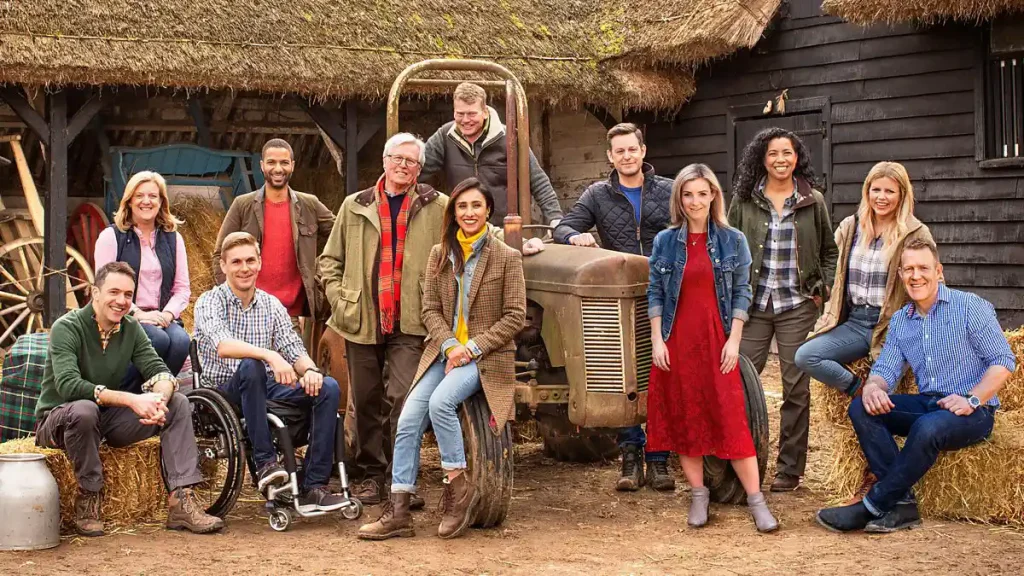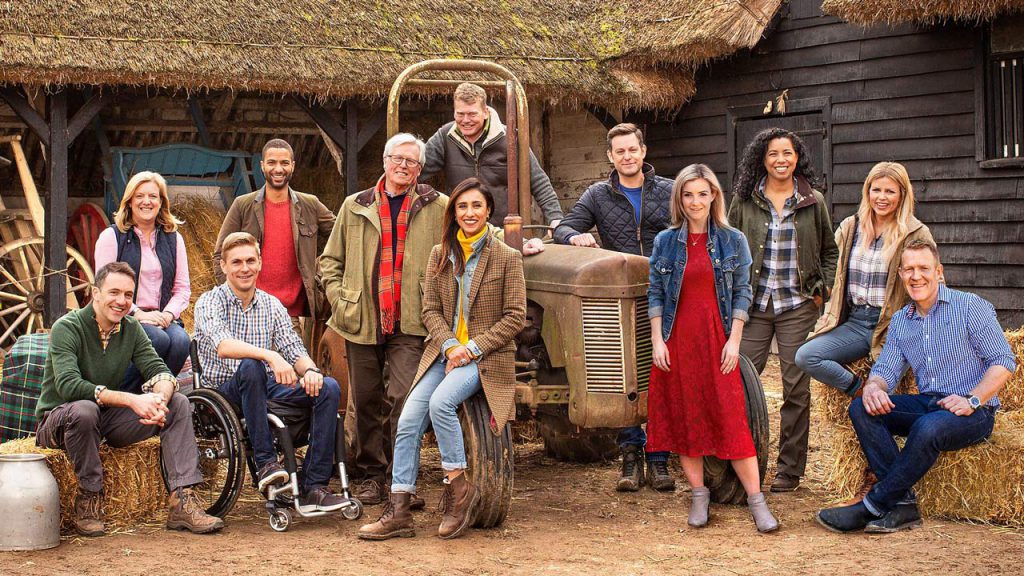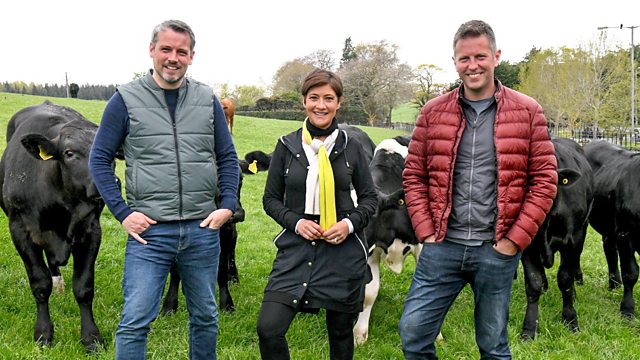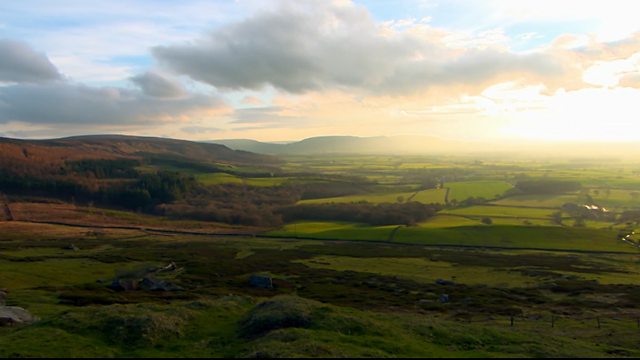Countryfile – Montacute House stands as a radiant gem amidst the picturesque landscape of Somerset’s countryside. This architectural marvel, a 400-year-old Elizabethan mansion, captivates visitors with its historical grandeur. However, beyond its stately presence, it is the encompassing countryside that holds the estate’s true treasures, boasting a sanctuary for some of the United Kingdom’s most elusive and rare wildlife species.
Join Matt Baker and Margherita Taylor on an enthralling exploration of Montacute House’s estate, where they delve into the meticulous management of its 270 acres of diverse woodland, expansive parkland, and meticulously maintained formal gardens. Their journey unveils the extraordinary efforts undertaken to sustain and protect the area’s unique biodiversity.
Margherita Taylor’s adventure leads her to a remarkable encounter with a dedicated conservationist who has spent the last seven decades committed to the preservation of the UK’s snail species. Together, they embark on a mission to reintroduce the rare Roman snail to the lush grounds of Montacute House. This effort not only aims to bolster the snail’s dwindling population but also highlights the estate’s role in safeguarding these often-overlooked creatures.
In addition to her snail conservation efforts, Margherita observes the estate’s innovative strategies to attract great crested newts to its serene ponds. These amphibians, which are a protected species, find a carefully crafted habitat designed to encourage their presence and breeding, demonstrating Montacute House’s commitment to fostering a thriving ecosystem.
Meanwhile, Matt Baker is engrossed in the creation of specialized habitats for various bat species. His work involves the implementation of traditional and contemporary techniques to ensure these nocturnal creatures have safe roosting spots. Through these efforts, Matt sheds light on the importance of bats in maintaining ecological balance, as they are vital for pest control and pollination.
The preservation of Montacute House itself is another fascinating aspect explored by Matt. The use of ancient techniques to maintain and protect the mansion’s interior not only conserves its historical integrity but also embodies the estate’s dedication to heritage conservation. These methods, passed down through generations, ensure that the mansion remains a timeless beacon of Elizabethan architecture.
As the exploration continues, we shift our focus to the Cotswolds, where Adam Henson examines cutting-edge agricultural practices. He investigates how drones are revolutionizing farming by enhancing soil health and efficiency. By planting crops from the air, these technological advancements promise a more sustainable and productive future for agriculture.
Back at Montacute House, the narrative weaves through the intricate tapestry of the estate’s flora and fauna. The sprawling woodlands, a mosaic of native trees and undergrowth, provide a haven for wildlife. Here, ancient oaks stand sentinel over the landscape, offering shelter and sustenance to countless species. The parkland, with its rolling meadows and dotted trees, serves as a vital corridor for animals, allowing them to traverse safely and thrive.
Countryfile – Montacute House
The formal gardens, a testament to human ingenuity and nature’s beauty, are meticulously curated to support a wide array of pollinators. Bees, butterflies, and other insects find refuge in the diverse plantings, which bloom in a symphony of colors throughout the seasons. These gardens are not only a visual delight but also play a crucial role in the estate’s ecological harmony.
Montacute House’s commitment to wildlife extends to its water features, where ponds and streams are carefully managed to create optimal conditions for aquatic life. The presence of newts, dragonflies, and other water-dwelling creatures signifies a healthy aquatic ecosystem, supported by the estate’s ongoing conservation efforts.
In this symbiotic relationship between human stewardship and natural splendor, Montacute House stands as a beacon of environmental preservation. The estate’s holistic approach to land management exemplifies a sustainable model, where historical heritage and ecological integrity coexist harmoniously. Each initiative, whether it’s the reintroduction of snails, the creation of bat habitats, or the enticement of newts, underscores a profound respect for the natural world.
As we conclude this journey through Montacute House and its surroundings, it becomes evident that the estate is more than just an architectural marvel. It is a living, breathing testament to the possibilities of conservation and sustainability. Through the dedicated efforts of individuals like Margherita Taylor and Matt Baker, the estate continues to flourish, nurturing both its historical roots and its vibrant ecosystem.
Countryfile’s feature on Montacute House offers an inspiring glimpse into the intricate dance between preservation and progress. By celebrating the estate’s natural and historical treasures, the program encourages us all to cherish and protect the delicate balance of our own environments. Whether through the lens of cutting-edge technology in agriculture or the timeless practices of heritage conservation, Montacute House reminds us of the enduring bond we share with the natural world.
Montacute House: A Haven for Rare Wildlife
The Elizabethan Mansion: A Brief Overview
Nestled in the heart of Somerset’s lush countryside, Montacute House stands as a testament to Elizabethan grandeur. This architectural gem, with its honey-colored Ham stone façade, has graced the landscape for over four centuries. As you approach the mansion, its tall windows and intricate stonework whisper tales of a bygone era.
Built in the late 16th century, Montacute House is more than just bricks and mortar. It’s a living, breathing piece of history that continues to captivate visitors from around the world. The house’s symmetrical design and towering glass windows were revolutionary for their time, setting a new standard for English country houses. Today, these same features provide a stunning backdrop for the estate’s natural wonders.
Beyond the Walls: The Estate’s Natural Wonders
Step beyond the manicured lawns and formal gardens, and you’ll find yourself in a world teeming with life. The Montacute estate spans an impressive 270 acres, encompassing a diverse tapestry of habitats. From ancient woodlands to wildflower meadows, each area plays a crucial role in supporting the estate’s rich biodiversity.
As you wander through the estate, you might hear the gentle rustling of leaves or catch a glimpse of movement in the undergrowth. These are signs of the hidden world that exists alongside the more visible attractions. The estate’s varied landscape provides sanctuary for countless species, from the tiniest insects to larger mammals. It’s a delicate ecosystem where every creature, no matter how small, plays a vital part in the greater whole.
Conservation Efforts: Preserving History and Nature
At Montacute, the past and present intertwine in a unique dance of conservation. The estate’s management team faces the dual challenge of preserving a historic building while nurturing the surrounding natural environment. It’s a balancing act that requires innovation, dedication, and a deep understanding of both architectural history and ecology.
Conservation efforts at Montacute go far beyond maintaining the physical structure of the house. The team works tirelessly to create and maintain habitats that support a diverse range of wildlife. From installing bat boxes in the eaves of old buildings to managing woodland areas for rare beetle species, every action is carefully considered. These efforts have transformed Montacute into a beacon of hope for some of the UK’s most endangered creatures.
Moreover, the estate serves as a living laboratory, where traditional conservation techniques meet cutting-edge research. By partnering with scientists and wildlife experts, Montacute is not just preserving the past but also paving the way for future conservation efforts. Through these collaborations, the estate is constantly evolving its approaches to ensure the best possible outcomes for both the historic property and its wild inhabitants.
Rare Creatures of Montacute Estate
The Roman Snail Reintroduction Project
Imagine a world where the slow and steady truly wins the race. At Montacute Estate, this isn’t just a fable – it’s reality. The estate’s groundbreaking Roman snail reintroduction project is turning heads in the conservation world. These gastropods, with their distinctive spiral shells, are not just garden pests but vital players in our ecosystem.
For seven decades, one passionate individual has championed the cause of UK snail species. His dedication has transformed Montacute into a sanctuary for these often-overlooked creatures. The Roman snail, once a common sight in British gardens, had all but disappeared from the estate. Now, thanks to this herculean effort, they’re making a comeback. As these snails slowly reclaim their territory, they’re leaving a trail of biodiversity in their wake.
Great Crested Newts: Enticing Amphibians to Estate Ponds
While snails take center stage on land, another rare species is making waves in Montacute’s ponds. The great crested newt, with its dragon-like crest and orange-spotted underbelly, is a true jewel of British wildlife. These elusive amphibians have found a haven in the carefully managed waters of the estate.
Creating the perfect habitat for these discerning creatures is no small feat. The estate team has meticulously crafted pond environments that cater to every stage of the newt’s life cycle. From egg-laying sites to hibernation spots, every detail has been considered. As a result, Montacute’s ponds have become a bustling metropolis for these aquatic acrobats. Visitors lucky enough to spot one are treated to a glimpse of nature’s artistry in motion.
Bat Species: Creating a Nocturnal Paradise
As the sun sets over Montacute, a different cast of characters takes to the stage. The estate’s diverse bat population emerges, turning the night sky into a flurry of silent wings. These nocturnal marvels, often misunderstood, play a crucial role in maintaining the delicate balance of the ecosystem.
Montacute has gone above and beyond to create a paradise for its bat residents. From specially designed roosts in the eaves of historic buildings to carefully managed woodland corridors, every aspect of bat life has been considered. The result is a thriving community of these aerial insectivores, each species filling a unique niche in the estate’s ecosystem.
Moreover, the presence of bats at Montacute serves as a barometer for the overall health of the environment. Their success story is a testament to the estate’s commitment to holistic conservation. As these winged wonders flit through the night, they’re not just hunting insects – they’re carrying the torch for biodiversity in the modern world.
FAQs: Montacute House and Wildlife Conservation
What makes Montacute House unique in terms of wildlife conservation?
Montacute House stands out as a beacon of wildlife conservation, seamlessly blending historical preservation with ecological stewardship. Unlike many historic estates, Montacute has embraced its role as a sanctuary for rare and endangered species. The estate’s 270 acres of diverse habitats, from ancient woodlands to carefully managed ponds, provide a haven for a wide array of creatures.
Moreover, Montacute’s approach to conservation is holistic and innovative. The estate team doesn’t just protect existing wildlife; they actively work to reintroduce species that have disappeared from the area. This proactive stance sets Montacute apart, making it a living laboratory for conservation techniques that could be applied elsewhere.
How can visitors contribute to the conservation efforts at Montacute Estate?
Visitors to Montacute Estate play a crucial role in supporting its conservation efforts. First and foremost, by simply visiting the estate, you’re contributing financially to its upkeep and ongoing conservation projects. However, there are many other ways to get involved and make a difference.
One of the most impactful ways to help is by participating in citizen science programs. These initiatives allow visitors to assist in wildlife surveys, helping the estate team track populations of various species. Additionally, volunteering opportunities are often available, ranging from habitat maintenance to guided nature walks. By sharing your experience with friends and on social media, you’re also raising awareness about Montacute’s important work, potentially inspiring others to support conservation efforts.
What are the best times of year to observe wildlife at Montacute?
Montacute Estate is a year-round haven for wildlife, but certain seasons offer unique viewing opportunities. Spring is particularly magical, as the estate comes alive with new growth and activity. This is when you’re most likely to spot nesting birds and early-emerging insects. The woodland floors are carpeted with bluebells, creating a breathtaking backdrop for wildlife watching.
Summer brings its own charms, with the ponds teeming with life and the meadows buzzing with pollinators. As the days grow shorter, autumn paints the estate in warm hues, providing the perfect setting to observe migratory birds and foraging mammals. Even winter has its allure, with bare trees making it easier to spot elusive woodland creatures. Each season at Montacute offers a different perspective on the estate’s rich biodiversity.
How does the estate balance public access with wildlife protection?
Balancing public access with wildlife protection is a delicate act, but one that Montacute Estate has mastered over the years. The estate employs a zoned approach, designating certain areas as wildlife sanctuaries with limited or no public access. This ensures that sensitive habitats and breeding grounds remain undisturbed.
In areas open to the public, carefully planned pathways guide visitors through the estate while minimizing impact on wildlife. Educational signage plays a crucial role, informing visitors about the importance of staying on designated paths and respecting wildlife. The estate also regulates visitor numbers during peak breeding seasons for certain species. By educating visitors and fostering a sense of stewardship, Montacute ensures that public enjoyment and wildlife protection go hand in hand.
What other rare species can be found at Montacute besides snails, newts, and bats?
While snails, newts, and bats are some of Montacute’s star attractions, the estate is home to a diverse array of other rare species. The ancient woodlands harbor populations of dormice, those endearing nocturnal rodents known for their hibernation skills. These elusive creatures find sanctuary in the estate’s carefully managed hedgerows and woodland edges.
In the meadows and grasslands, you might spot the vibrant wings of the marsh fritillary butterfly, a species of conservation concern across Europe. Montacute’s ponds and wetlands also support a population of grass snakes, Britain’s largest snake species. These harmless reptiles are excellent swimmers and can often be seen basking near water bodies. The estate’s commitment to preserving diverse habitats ensures that even the rarest and most secretive species have a chance to thrive at Montacute.
Conclusion: The Future of Montacute’s Wildlife Conservation
Lessons from Montacute’s Conservation Success
Montacute Estate stands as a shining example of how history and nature can coexist in harmony. The estate’s success in wildlife conservation offers valuable lessons for similar initiatives worldwide. First and foremost, Montacute demonstrates the power of a holistic approach. By considering the entire ecosystem, from the tiniest snail to the majestic trees, the estate has created a thriving biodiversity hotspot.
Another key lesson is the importance of patience and persistence. Conservation efforts often take years, even decades, to show results. Montacute’s 70-year dedication to snail species preservation is a testament to this long-term commitment. This persistence has paid off, with the estate now boasting populations of rare species that have vanished from other parts of the UK. Moreover, Montacute’s success highlights the value of collaboration between historians, ecologists, and the public. This interdisciplinary approach has allowed the estate to balance the preservation of its historical legacy with its role as a wildlife sanctuary.
Inspiring Future Generations of Conservationists
As we look to the future, Montacute’s role extends beyond its boundaries. The estate has become a living classroom, inspiring visitors of all ages to engage with nature and conservation. By opening its doors to the public and offering hands-on experiences, Montacute is nurturing the next generation of environmental stewards. Children who visit the estate leave with a newfound appreciation for the intricate web of life that surrounds us.
Furthermore, Montacute’s innovative approaches to conservation are setting new standards in the field. From the use of drones for habitat mapping to the application of ancient preservation techniques, the estate is at the forefront of conservation technology. These methods are not just preserving Montacute’s wildlife; they’re providing a blueprint for other conservation projects around the world. As climate change and habitat loss continue to threaten biodiversity globally, the lessons learned at Montacute become ever more crucial.
The future of Montacute’s wildlife conservation looks bright, but it depends on continued support and engagement. By visiting the estate, participating in citizen science projects, or simply spreading the word about its important work, we all have a role to play. Montacute reminds us that conservation is not just about protecting nature – it’s about fostering a deep connection between humans and the natural world. As we face the environmental challenges of the 21st century, places like Montacute offer hope and inspiration for a more sustainable future.




